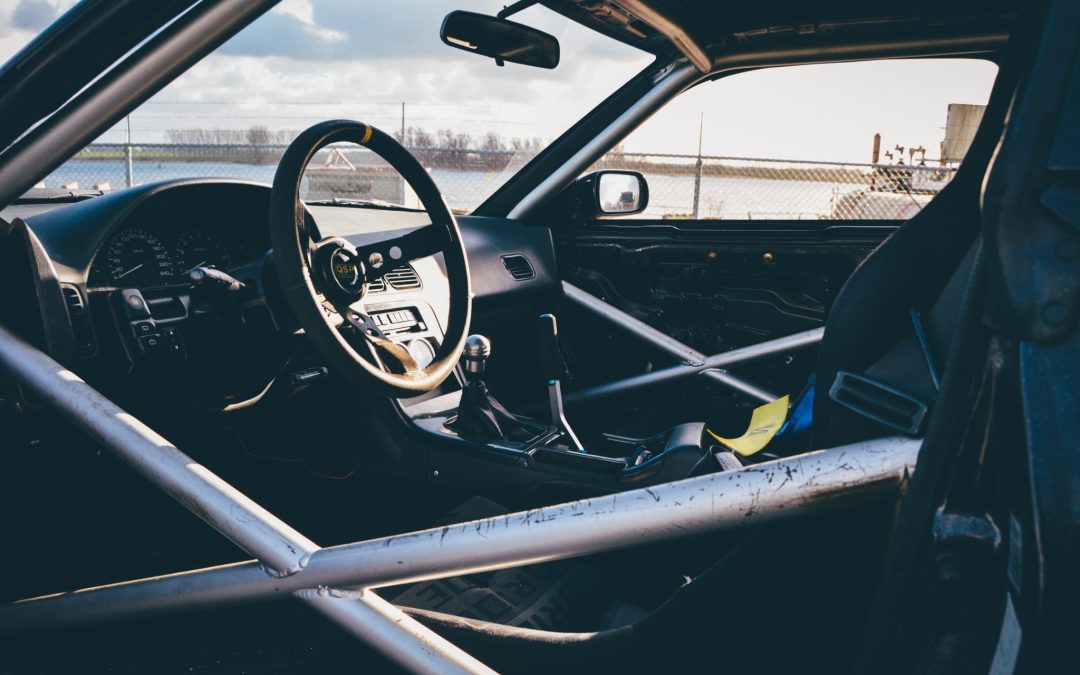Introduction: Where are we going?
For a long time, the evolution of the human-automotive interface has followed a rather slow pace. Some elements haven’t changed fundamentally for a century… but the digital transformation is turning everything upside down, and could, why not, in the near future even eliminate such familiar control instruments as the steering wheel or the brake pedal.
But will it really come to that? Frédéric Charon, Group Technology Strategy Manager at Faurecia, spoke at Dystopia 2019 and showed that the answer to this question is by no means obvious:
To contribute to this line of questioning, we have the opportunity to take a quick look at human-machine interfaces (HMI) applied to the automotive industry. A horizon of technologies that is currently bubbling up.
First point: the human-automotive interface at the crossroads of disruption dynamics
Before talking about autonomous vehicles, let’s recall the fact that there are already major trends in driver assistance systems that increasingly tend to question the conventional control interface.
In addition to this, there are new control methods: voice, to direct the work of digital assistants, but also manual gestures, interesting for a driver whose hands are typically less available to make adjustments by touch.
Some manufacturers offer PDAs, which seem to be designed to promote emotional fusion between driver and machine. Taken from BMW’s description of its assistance service:
“When you greet the intelligent BMW Personal Assistant with ‘Hey BMW, I’m tired’ after a long working day, he launches a revitalisation programme in which he adapts the lighting, temperature and music accordingly. If, on the other hand, you tell him that you are bored, he automatically adapts the settings to this mood. Your statement “Hey BMW, I’m cold” is also enough to automatically adjust the interior temperature.”
The system also scans calendars to indicate the best routes to meeting points.
But these trends alone wouldn’t be enough to turn cars’ HMI systems upside down if they weren’t destined to become increasingly connected on the basis of an open and interoperable architecture. The individual vehicle thus becomes part of the mobility system and no longer an independent car. HMIs are only the emerging part of a set of factors that tend to blur the boundary between the vehicle and what is external to it.
Second point: on-board operators vs. off-board operators
This blurring of boundaries leads to a multiplication of IMH. The driver inside the vehicle becomes an on-board operator, to which can be added operators… disembarked, nestled in a control tower, but also equipped with an HMI adapted to monitor the driving conditions of a fleet of vehicles, and to be able to intervene quickly if necessary. The notion of fleet manager will thus take on a completely different meaning in the future than it does today.
Third point: the interface is an important aspect of the future autonomous vehicle
This redistribution of roles is part of a trend whose term is none other than the autonomous vehicle. Today, we are still quite far from complete autonomy, as defined in the 6-level (0-5) classification used in this field, and which we recall in a technology sheet dedicated to the autonomous vehicle, published in May 2018 on open-organization.com. As a reminder, here are the six levels:
- 0: traditional vehicle with no automated functions;
- 1-4: increasing driver assistance, driver information and recovery systems during the phases of driving delegation.
- Level 3 allows automated driving in pre-defined situations, where the driver must however regain control “instantaneously”.
- Level 4 allows automated driving in pre-defined situations without driver control and regaining control.
- 5: Full automation.
The ultimate level of the autonomous vehicle only takes on board simple passengers (riders and not drivers). The HMI then totally changes its nature and aims to satisfy the leisure or work needs of passengers… or even to increase the rate of use of the “car” asset by making it available to other passengers: isn’t this Tesla’s vision of the future according to Elon Musk?
Conclusion: What do we want?
Manufacturers are already integrating the idea of an emotional fusion between the operator and the HMI of the vehicle. In this new universe of technological possibilities, one may wonder what will remain of the pleasure of driving, beyond the images of a bygone era, like the one that adorns this ticket? Let’s bet that the design of the new automotive HMIs will not lose sight of this aspect… especially if it continues to exist as a competitive differentiating factor.
This article was written with the help of Bernard Favre, Fellow Presans.



